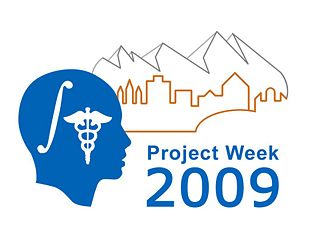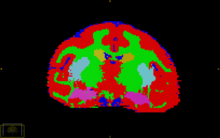Difference between revisions of "2009 Winter Project Week WFU1"
| Line 36: | Line 36: | ||
TO-DO: | TO-DO: | ||
* replace FLS-flirt with rigid and affine CLPs | * replace FLS-flirt with rigid and affine CLPs | ||
| + | * develop a cleanup process using the Slicer3 editor | ||
| + | * create XNAT delivery mechanism for NHP atlas and test subject data | ||
| + | |||
| + | |||
| + | COMPLETED | ||
| + | |||
* write and test CLP module using our existing ITK-based deformable registration code | * write and test CLP module using our existing ITK-based deformable registration code | ||
* write and test CLP module using our existing ITK-based brain extraction code | * write and test CLP module using our existing ITK-based brain extraction code | ||
| − | |||
| − | |||
* write new tutorial using all-Slicer3 workflow | * write new tutorial using all-Slicer3 workflow | ||
| + | |||
</div> | </div> | ||
Revision as of 19:08, 2 January 2009
Home < 2009 Winter Project Week WFU1 Return to Project Week Main Page |
Key Investigators
- Virgina Tech: Chris Wyatt
- Virginia Tech: Vidya Rajagopalan
- TBD
Objective
We are developing methods for analysis of structural images from nonhuman primates for identifying regional differences in brain morphometry caused by interactions of stress and alcohol exposure. The current workflow for segmentation of the subject images involves a collection of tools that make it difficult to export to the neuroscience community. The goal of this project is to move our entire workflow into Slicer 3.
Approach, Plan
At the 2008 NA-MIC Summer Project Week we optimized EMSegmenter in slicer2 for segmentation of tissue classes and subcortical structures (above image). We have since moved to using the EMSegmenter module in Slicer3. Comparisons between the resulting segmentations show only small differences.
Our plan for the project week is to move our entire NHP segmentation workflow into Slicer3 so that it is easier for collaborators and others to use. This requires replacing our current registration procedure based on FSL-FLIRT and writing command-line modules for a few custom tools.
Progress
TO-DO:
- replace FLS-flirt with rigid and affine CLPs
- develop a cleanup process using the Slicer3 editor
- create XNAT delivery mechanism for NHP atlas and test subject data
COMPLETED
- write and test CLP module using our existing ITK-based deformable registration code
- write and test CLP module using our existing ITK-based brain extraction code
- write new tutorial using all-Slicer3 workflow
References
NA-MIC_NCBC_Collaboration:Measuring_Alcohol_and_Stress_Interaction
